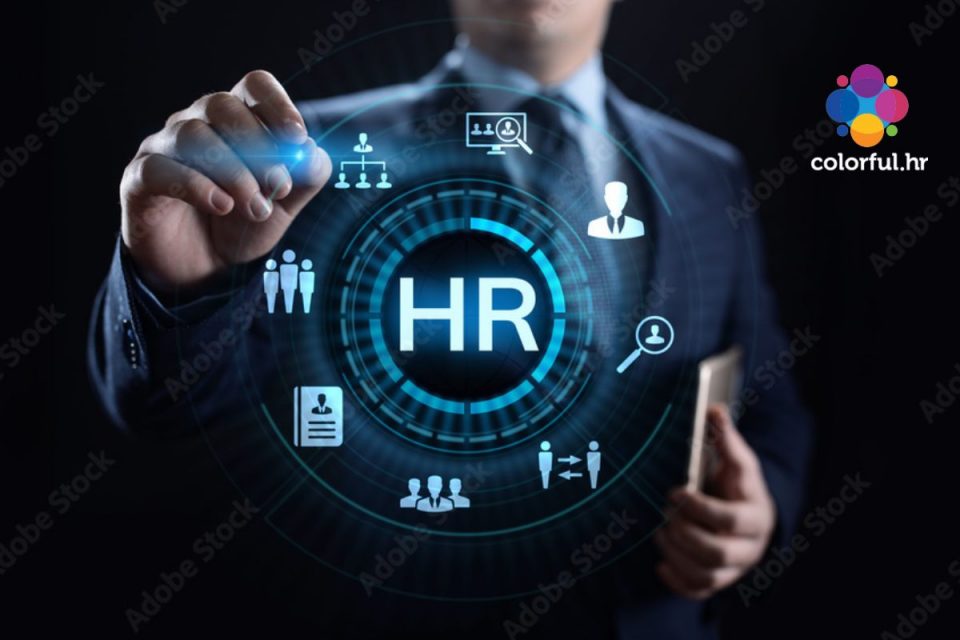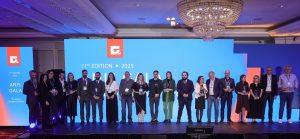Digital Transformation: creating a human-centered workplace

Integrating the digital workplace
Following the pandemic, we are left with hybrid work, and now it is the duty of employers to integrate this new way of working into the workplace, thus creating a digital workplace. This is a new and more effective way of working. It increases employee engagement and flexibility by leveraging new technologies. And these new technologies should work together to create a new experience for the employee, from the recruitment phase to the exit interview.
Automating HR processes will affect the whole work structure of human resources specialists and how they collaborate with other departments in the company. But, let’s not forget that it’s HR’s job to shape the employee experience and create a motivating work environment, be it hybrid or not. Hence, the rest of the employees will also have a new experience throughout their whole employee life cycle.
Re-designing the employee experience for the digital workplace
Digital employee experience is a representation of how effectively individuals interact with their workplace digital technologies, allowing them to be engaged, skilled, and productive. A digital employee experience includes interfacing with technologies for workflow and productivity, communication and collaboration, learning and development, and HR systems. But how can digital HR software create a new experience for employees?
The first interaction between a potential future employee and the company happens in the recruitment process. With the help of an Applicant Tracking System software, the recruiter will automate the selection part through automatic screening of CVs, collaborate easily with the manager and will be able to track the status of each candidate in the recruitment process. Therefore, the candidate’s experience in the recruitment process will be shorter, and the chances of accepting an offer will be higher.
For HR professionals, the next steps at this point are administrative or payroll related. But these processes can be very simple, through templates, automation and tasks that you can complete in a few clicks using dedicated software.
But, the employee’s next interaction with the company is during the onboarding process. Onboarding is probably one of the most overlooked aspects when it comes to new employees. But we, at colorful.hr, thought it shouldn’t be like that. So we created an onboarding functionality that will help new team members go through an integration process from A to Z: they will be assigned a buddy that is a trainer, they will have access to informative documents, they will receive introductory tasks, feedback surveys and more. All this in order to have time to settle into the work, assimilate the organizational culture and understand their new role.
After that, the new employees need to collaborate further with the HR department. And they will be able to, in an efficient way, through Employee Self Service software, where they will manage their time and attendance or take days off, request training and complete their training in a Learning Management System, and at the right time, they will be evaluated, using an employee evaluation software correlated with the objectives they set together with their managers.
And if the time comes, there is also an exit interview functionality so that all employee feedback can be collected, analyzed, and the company’s retention strategy can be improved. And this is talent management in the digital workplace! That’s how we roll at Romanian Software, and that’s what we help our clients to achieve.
Key challenges of digital transformation and how we overcome them
In the spring of this year, colorful.hr launched a study on trends in the digital solutions market for HR teams. In the study, the challenges encountered in the implementation of digital software were listed, as seen through the eyes of HR specialists from over 300 Romanian companies.
Skilled employees are needed to succeed in transformation efforts, which seems to be a major concern. According to the study, 36% of organizations said they could not accomplish their digital transformation goals because they lacked technically skilled employees. Nowadays, this shall not be a reason to worry about. Software solutions are user-friendly, and training is carried out to have everyone „on board” before the end of the implementation.
Another challenge is technical and operational constraints. For automation to work, the company’s internal processes must be integrated and optimized before the actual automation. If companies do not have standardized processes, it is difficult to impossible to automate them.
Going over budget is another obstacle. The good news is that software solution providers have tailored the software packages so well that even small businesses can afford them without going over budget. colorful.hr is used by companies with less than 10 employees, but also by large corporations.
And the last but not least challenge is, of course, the resistance to change. Things change slowly, automation is looked down upon, and new technologies are difficult to adopt. One huge challenge of digital transformation is a cultural one. Everyone must be on the same page – from leadership to new employees. Everyone should be ready to make big changes in their day-to-day lives and not be afraid of learning new things.
Are you ready for a digital transformation?
For more than 21 years, colorful.hr has been digitizing HR processes; from time and attendance software, payroll and document management that simplify the HR administration to digital solutions that contribute to the growth of the company with the help of software dedicated to recruitment (Application Tracking System), staff training (Learning Management System) and HR data analysis.
Contact a consultant and discover customized solutions for the needs of any business.












